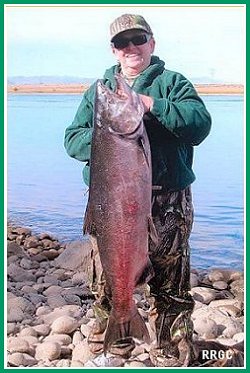Site Map
Handling Fish
Handling Fish
Handling Fish and Shellfish
Capt. Clark
October 17th Thursday 1805 Forks of Columbia
This river is remarkably Clear and Crouded
 with Salmon in maney places, I observe in assending great numbers of Salmon dead on the Shores, floating on the water and in the Bottoms which can be seen at the debth of 20 feet. the Cause of the emence numbers of dead Salmon I can't account for So it is I must have seen 3 or 400 dead and maney living. The Indians, I believe make use of the fish which is not long dead as, I Struck one nearly dead and left him floating, Some Indians in a canoe behind took the fish on board his canoe. with Salmon in maney places, I observe in assending great numbers of Salmon dead on the Shores, floating on the water and in the Bottoms which can be seen at the debth of 20 feet. the Cause of the emence numbers of dead Salmon I can't account for So it is I must have seen 3 or 400 dead and maney living. The Indians, I believe make use of the fish which is not long dead as, I Struck one nearly dead and left him floating, Some Indians in a canoe behind took the fish on board his canoe.*
Field dressing and transporting fish is straight forward and includes gutting, bleeding and keeping the fish cool. Shellfish are different because there is no field dressing required and the shellfish must be keep alive during transport. Even though fish and shellfish have temperatures equivalent to those of the surrounding waters, they must be kept at temperatures below 40 degrees F until they are processed.
Processing fish depends on the type of fish, its size, and method of cooking. It can be kept whole, cut into steaks and filleted. If fish are to be stored for future use they can be frozen. Clams and mussels may or may not be removed from their shells before cooking and oysters can be eaten on the half shell raw or removed from the shell and cooked. Crabs are processed by boiling and then removing the viscera and gills. The meat is then removed from the shell for immediate use or freezing.
Details on field dressing, transporting and processing fish and shellfish can be accessed by clicking on the links above.
|
||
